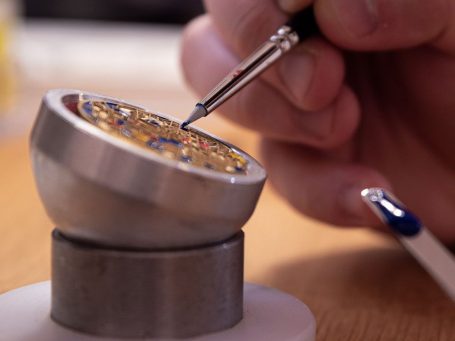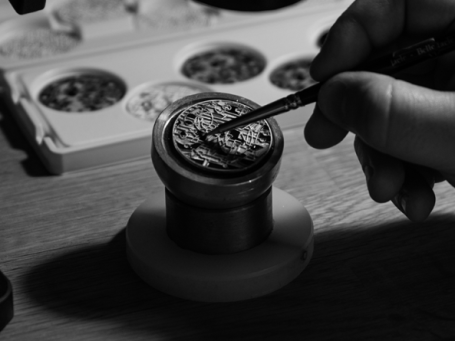What is a real handcrafted dial?
Bereve starts from a handmade draft to create the dials. Then the Company chooses the colours in an accurate manner and it accomplishes the optimisation of the symmetries.
The practise of adjusting the draft enables watchmakers to turn the idea into a dial that perfectly fits the timepiece.
The base of the dials is a precious metal slab, made of 999 silver and 24k gold (the only two materials used by Bereve for its projects). It’s handmade and engraved by the skilful hands of a Master goldsmith.
A Master expert in enamelling handles the next steps.The fired enamel is a fundamental element. Bereve experts in enamelling handle this ancient art so as to provide modern horology with unique practices.
The complex procedure of working with enamels, that implies a delicate heating process and a complicated use of powders, contributes to the development of the timepiece industry.
Bereve uses only fired enamel, which flows between 730 and 900 degrees Celsius. This technique has been handed down through centuries and it’s currently used by only a few artisans in the whole world.T
he pigment powders are pulverized on the base of the project’s characteristics.
Then a long cleaning process takes place, with the aim of removing all the impurities and all the elements that could adulterate the colour. A single mistake could nullify days of hard work!

The Cloisonné technique is the most difficult of enamelwork. Thin rectangular wires of precious metal are bent to create some cells.
The wires’ thickness gauge up to 0.05 mm.
They are attached to the surface of the metal to form the cells where the enamel is laid repeatedly.
The Plique-à-jour technique recalls the ancient stained-glass windows.
The enamel is laid to partially cover the surface of a base. In this case, the base is removed, leaving the network of metal wires filled with enamels.
This technique uses namely translucent enamels to create a special effect, which transmits light.
The Champlevé technique consists in engraving mechanically the surface of the precious metal, through the use of a burin.
The engravings are filled with the enamel. The result is an alternation of enamel and metal.




©Copyright. Tutti i diritti riservati.
Abbiamo bisogno del vostro consenso per caricare le traduzioni
Per tradurre i contenuti del sito web utilizziamo un servizio di terze parti che potrebbe raccogliere dati sulla vostra attività. Si prega di rivedere i dettagli nell'informativa sulla privacy e accettare il servizio per vedere le traduzioni.
